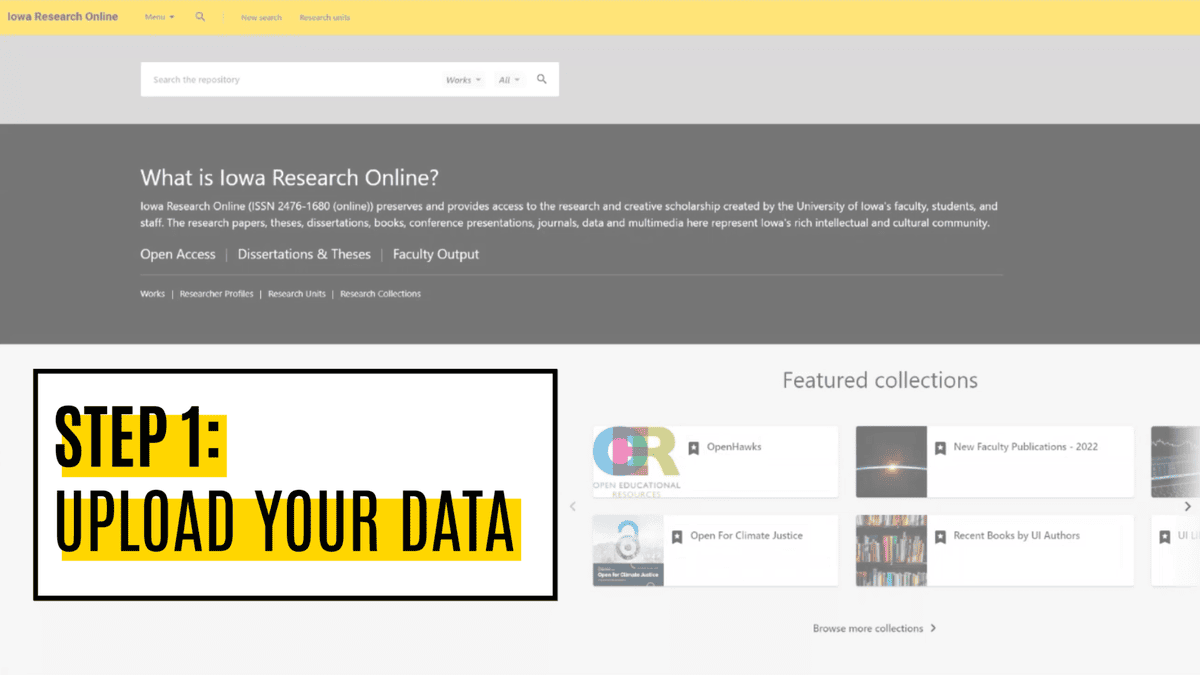Do you need a data management and sharing plan (DMSP) for your grant proposal? The University of Iowa Libraries Research Data Services can help! Brian Westra, data services librarian, is available to help you create a data management plan in alignment with funding agency requirements. If you have questions about: Which repository is most appropriateContinue reading “Get expert help with your data management plan”
Tag Archives: research data
How-To: Uploading Your Datasets into IRO
Iowa Research Online (IRO) is the institutional repository managed by the University of Iowa Libraries for UI researchers to use for preserving and providing open access to data, code, and other research and creative scholarship. These videos provide a quick introduction to four steps for sharing research data via IRO. For more information, see ourContinue reading “How-To: Uploading Your Datasets into IRO”
DMPTool Helps Researchers Write Data Management and Sharing Plans
Because funding agencies like the National Institutes of Health (NIH) and the National Science Foundation (NSF) now require data management and sharing plans as part of grant applications, researchers tasked with writing these documents may feel at a loss about where to start. Luckily, University of Iowa researchers have support in this process. Not onlyContinue reading “DMPTool Helps Researchers Write Data Management and Sharing Plans”
The Power of Persistent Identifiers in Data Sharing
Every researcher has likely seen Digital Object Identifiers (DOIs) attached to the articles they read, cite, and publish. As unique codes that distinguish a specific research article, dataset, or other digital object, DOIs make it much easier to find and cite the work of other scholars. What you may not know, however, is that DOIsContinue reading “The Power of Persistent Identifiers in Data Sharing”
Data Curation: Adding Value to Your Dataset
You may already know that the University of Iowa’s institutional repository, Iowa Research Online (IRO), provides both preservation and access to your dataset for the long term. You may not know, however, that Research Data Services in the Scholarly Impact Department at the UI Libraries also offers another key service to researchers depositing their dataContinue reading “Data Curation: Adding Value to Your Dataset”
Why Iowa Research Online is an Ideal Place for Your Data
University of Iowa researchers are increasingly taking advantage of the university’s institutional repository, Iowa Research Online (IRO), to house their research and creative works. IRO currently holds nearly 115,000 research outputs from Iowa faculty, staff, and students, and has seen more than 12 million downloads of content since 2009. On top of preserving articles, books,Continue reading “Why Iowa Research Online is an Ideal Place for Your Data”
